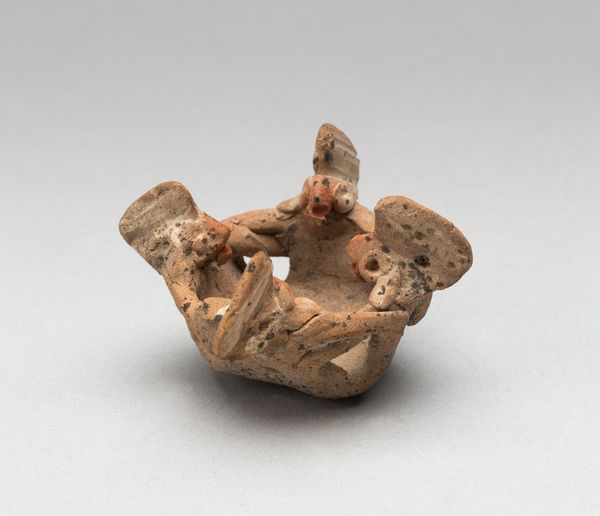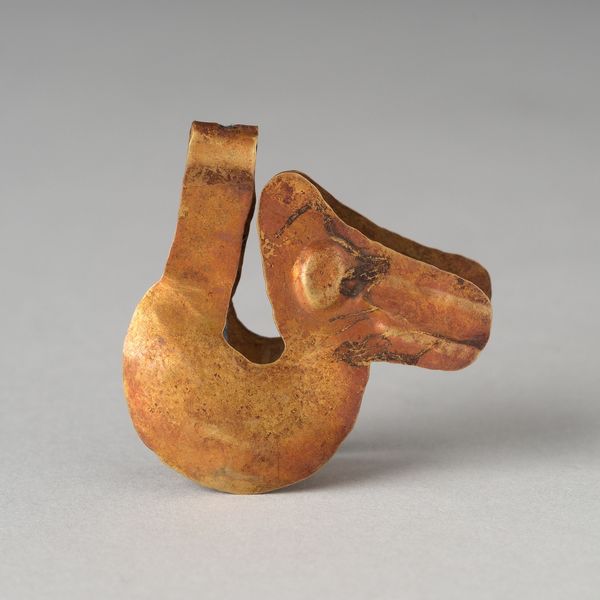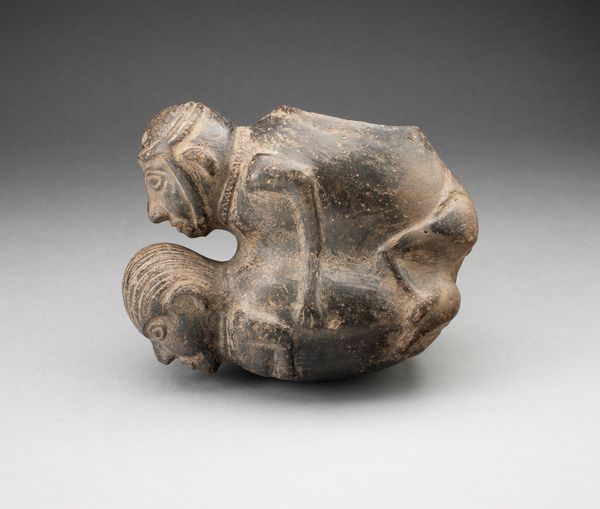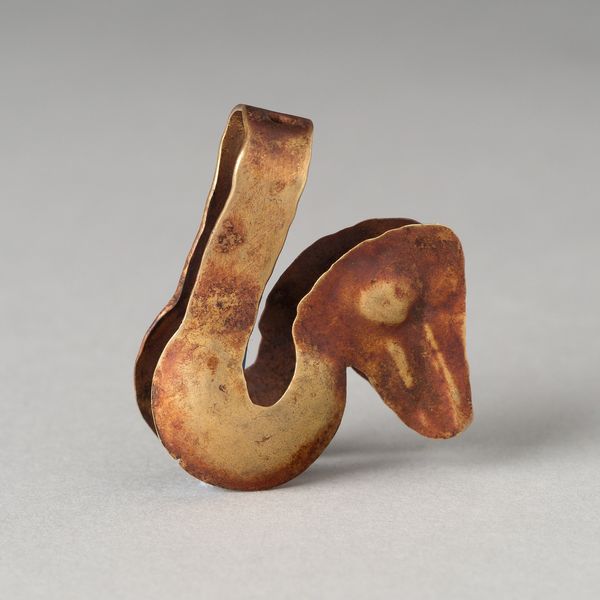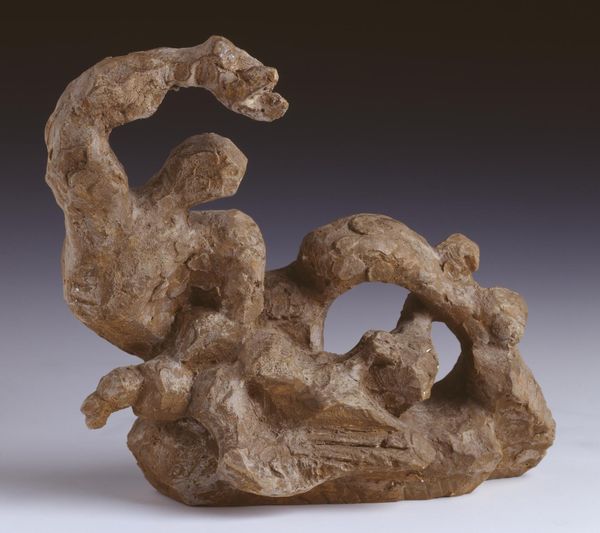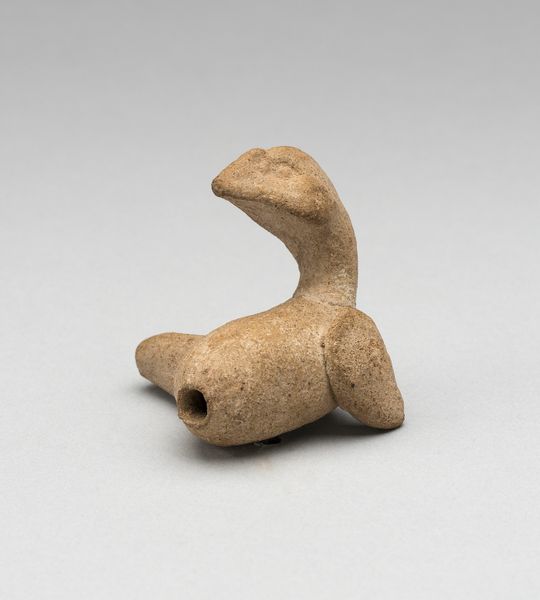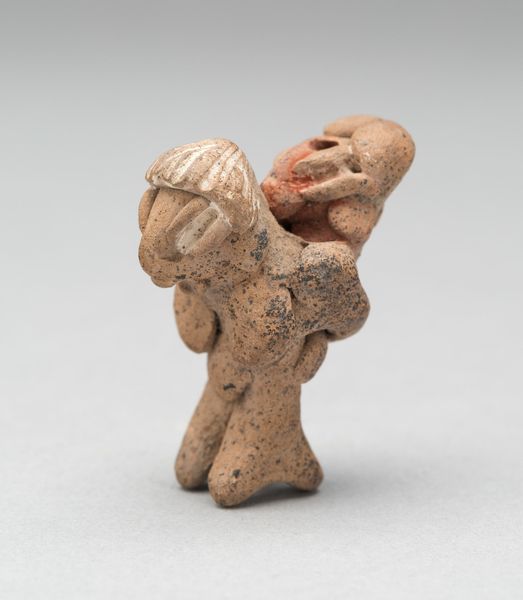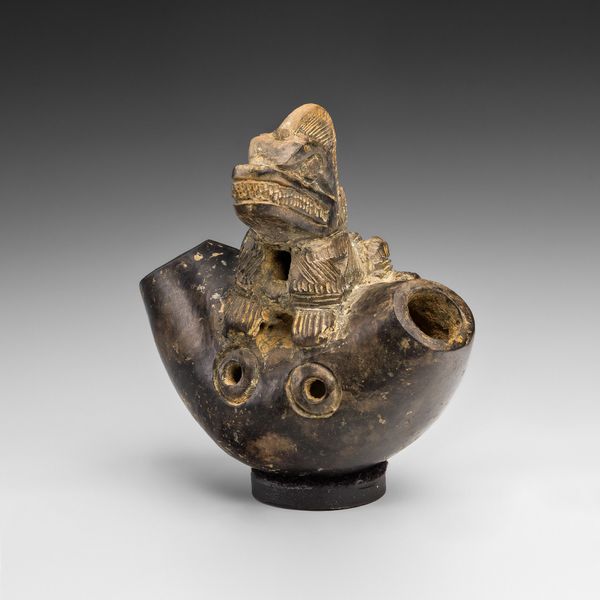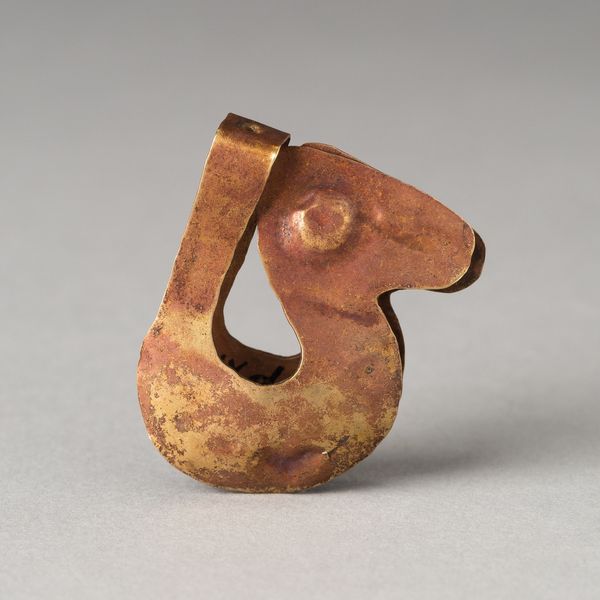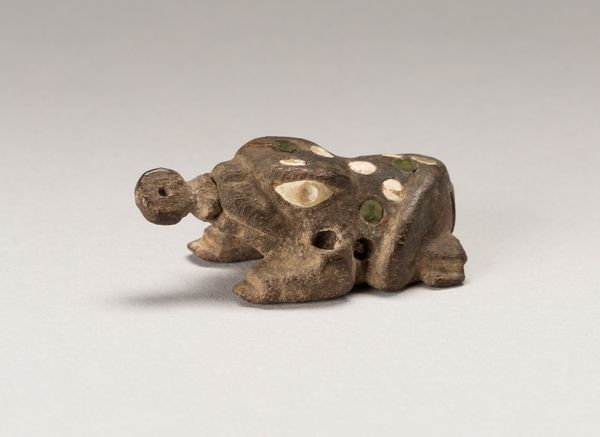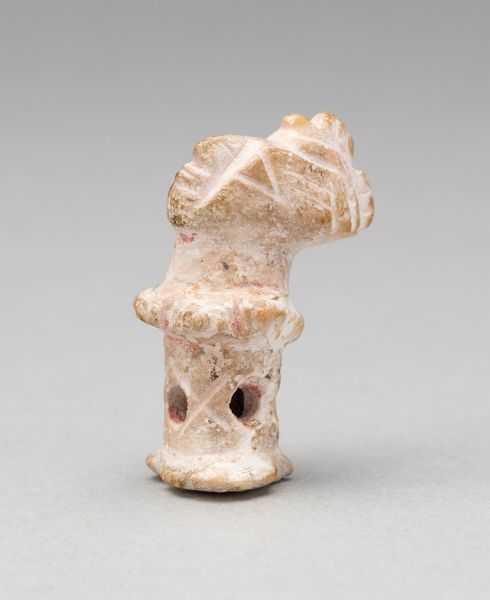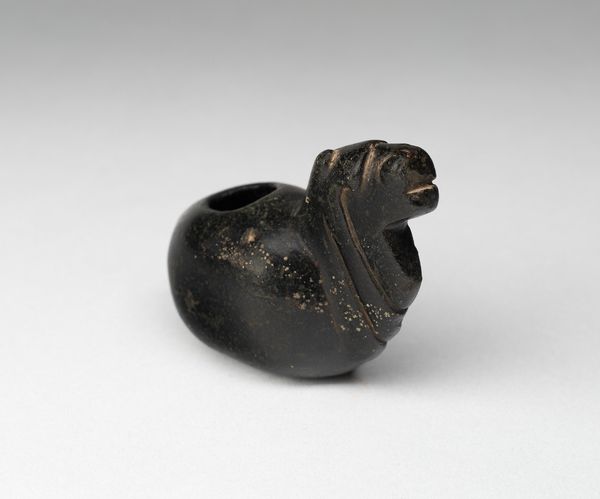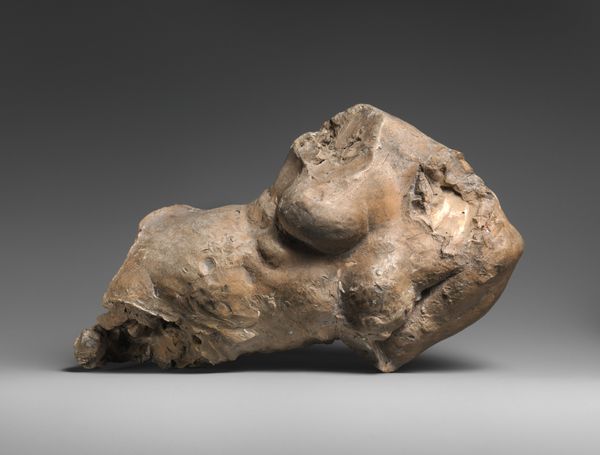
sculpture, terracotta
#
narrative-art
#
figuration
#
sculpture
#
terracotta
#
indigenous-americas
Dimensions: 4.5 × 7 cm (1 3/4 × 2 3/4 in.)
Copyright: Public Domain
Editor: We are looking at "Figure of a Jaguar Attacking a Man" from the Maya culture, dated approximately 250-900. I’m struck by the drama held within such a small object, especially the intensity etched onto the figure’s face. What do you see as crucial when we interpret this piece? Curator: Let's start with the material. Considering its likely creation from a stone, observe the labor required to produce this piece. Does the stone's availability and properties within Mayan territories suggest any relationship with trade or ritual use of tools and crafting expertise passed between artisans? Editor: That’s fascinating. So you’re thinking about the socio-economic implications tied to even sourcing the material, let alone the sculpture itself. It is such a dynamic representation; it’s interesting to think about who the target audience may be and where and when the artwork could be viewed or consumed? Curator: Precisely! Consider how Mayan societal structures are tied to how meaning would be ascribed to materials. Was it accessible to the masses, or was its consumption limited by trade networks or artisan guilds. Then, consider the figure: the representation of this attack, what’s the jaguar signifying here? It invites us to speculate on symbolic exchanges in a specific culture with social connotations or value. Is there a material hierarchy here implied as well through how each form, both the Jaguar and Man, take shape? Editor: So, it becomes less about the “art” and more about the physical act of creation and social factors. Very thought-provoking. I never considered this sculpture from this viewpoint before. Curator: And by decentering the individual "artist," and focusing on labor, it shifts focus to the collaborative conditions which enabled them, making it about social process. Editor: That does bring a completely different understanding to how to assess art and how it is contextualized! Thank you.
Comments
No comments
Be the first to comment and join the conversation on the ultimate creative platform.
